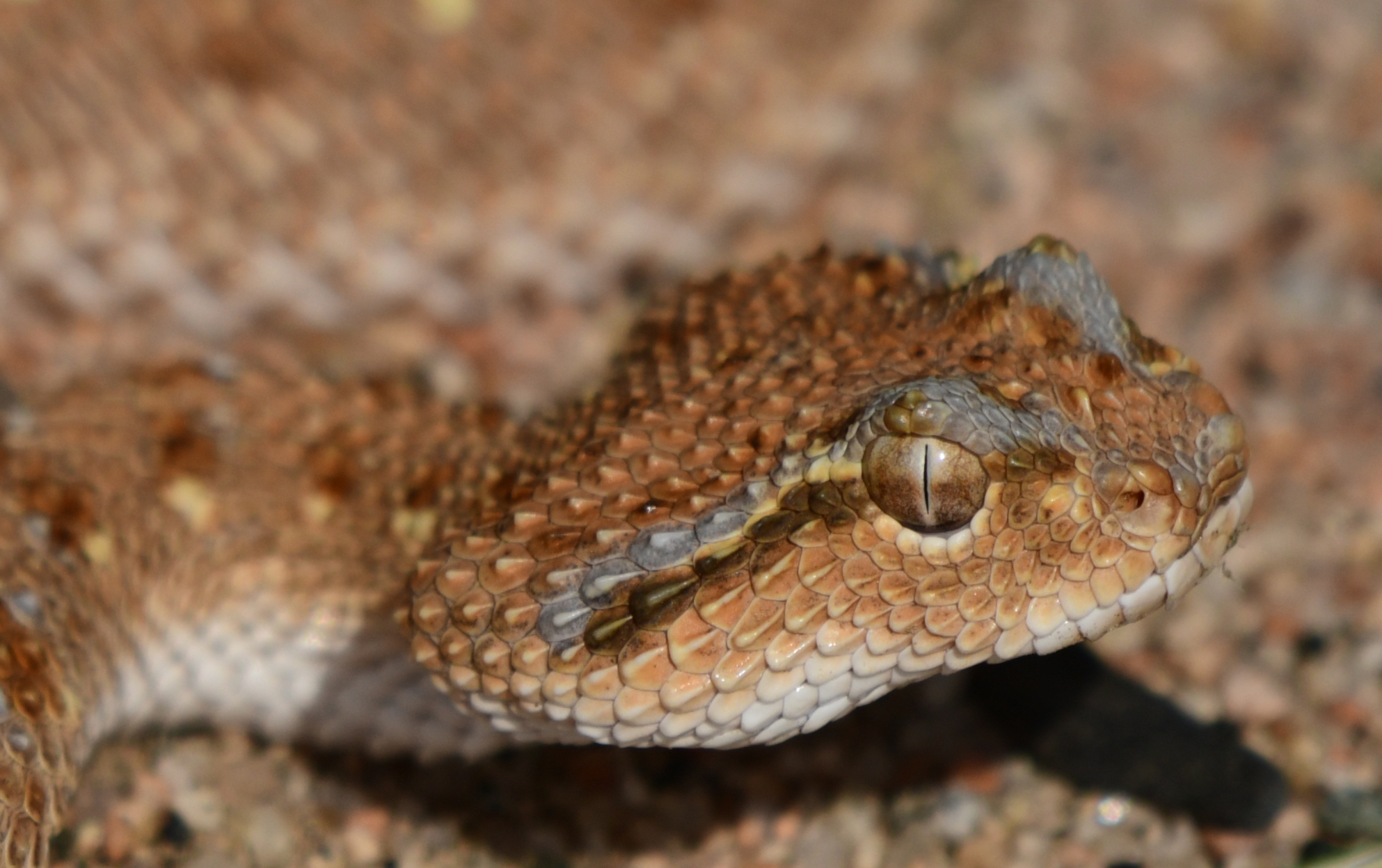Reference genome of the Arabian Horned Viper sequenced

Snake bites pose a significant public health challenge, but their toxins also hold great biomedical potential. Used in antidotes, drugs, and cancer therapies, these bioactive substances demonstrate the principle that "the dose makes the poison." However, reference genomes of venomous snakes are notably scarce. These genomic tools are crucial not only for venom research but also for studying their evolution and the conservation of these essential animals within ecosystems.
For the first time, an international team led by the Institute of Evolutionary Biology (IBE), a joint centre of the Spanish National Research Council (CSIC) and the Pompeu Fabra University (UPF), has sequenced the reference genome of the Arabian Horned Viper (Cerastes gasperettii). The study has identified a new toxin-coding gene hidden in its genome, alongside 10 toxin genes that form the core of the venom injected into its prey, with potential medical applications. Additionally, the team has uncovered the demographic history and evolution of the viper.
Decoding the Genome of the Arabian Horned Viper
Since 2024, the Systematics, Biogeography, and Evolution of Reptiles and Amphibians Group at IBE has produced four reference genomes of venomous snakes globally, a highly limited resource, as only a few dozen are available. In this study, the team presents a fifth high-quality reference genome: that of the Arabian Horned Viper.
Using different sequencing techniques, the group successfully sequenced the snake's DNA at the chromosomal level, revealing 99.44% of the genome. The study has annotated over 27,000 protein-coding genes, 194 of which encode the viper’s toxins.

Arabian Horned Viper (Cerastes gasperettii): Frontal Head. Credit: Salvador Carranza.
"From a single individual, we revealed the genome of an entire species. This speaks volumes about the importance of obtaining reference genomes not only for medical venom research but also for studying biodiversity and the evolution of snakes, a key animal in ecosystem conservation," says Gabriel Mochales, a predoctoral researcher at IBE and first author of the study.
Revealing the Core of the Viper's Venom
The core toxins of the venom are found in the venom glands that the snake injects into its prey and are crucial for the development of antidotes. The venom of C. gasperettii is of particular importance as it is considered medically relevant by the World Health Organization (WHO). It is one of the most common snakes in the deserts of Arabia, and its bite causes tens of thousands of deaths and disabilities each year. By sequencing the reference genome, the study identified the 10 key toxins that make up the core of the viper's venom.
"Knowing the core venom toxin genes lays the groundwork for the development of next-generation synthetic antivenoms that improve efficacy variability and reduce the risk of severe allergic reactions," explains Mochales.
Additionally, the study has identified a new latent gene in the genome of this viper, which encodes venomous substances (toxins). This gene shows independent evolution of venom compared to other vipers and is not expressed, meaning it cannot be observed in the snake’s venom.
"Venom research has traditionally focused on the toxins that make it up. However, having reference genomes allows us to go beyond and discover toxin genes that aren't being expressed. These genes are evolutionary deposits of bioactive molecules with untapped potential for drug development," explains Salvador Carranza, principal investigator and director of IBE, who led the study. "Furthermore, it allows us to study the evolution of viper venom and can serve as a reference for other venomous snake species," he adds.
The Viper’s Genome Reveals Its Adaptation to the Desert
Using the genome of a single individual, the team has uncovered new insights into the demographic history of Cerastes gasperettii, dating back to the last two glacial maxima, over 20,000 years ago.
During the glaciations, global sea levels dropped by about 150 meters, exposing soil and sand to wind erosion in the Arabian Peninsula, leading to soil aridification. The current study found that populations of Cerastes gasperettii increased during these two periods, likely benefiting from the climate's desertification.
“These findings provide new information about the preservation and ecological role of these animals, which are fundamental to ecosystems," says Carranza, concluding that “understanding genetically how these vipers adapted to the desertification of the Arabian Peninsula could inspire solutions and guide conservation efforts in the face of climate change, which is driving soil aridification today.
Reference article: Mochales-Riaño G, Hirst SR, Talavera A, Burriel-Carranza B, Pagone V, Estarellas M, Busschau T, Boissinot S, Hogan MP, Tena-Garcés J, Pla D, Calvete JJ, Els J, Margres MJ, Carranza S. 2025. Chromosome-level reference genome for the medically important Arabian horned viper (Cerastes gasperettii). GigaScience 14: giaf030. DOI: 10.1093/gigascience/giaf030.
